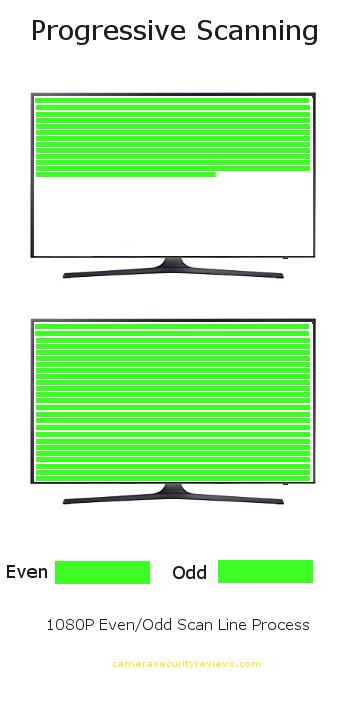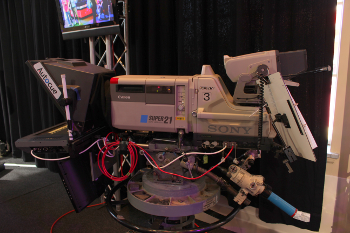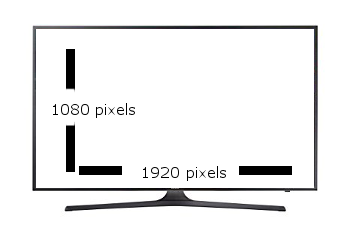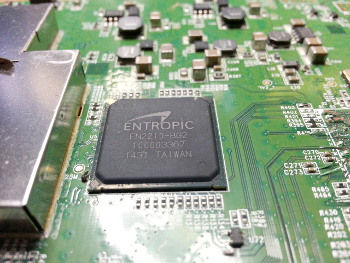1080P vs 1080i Resolution Exposed!
How are they related? How are the unique?
Defining 1080P vs 1080i is easier than you may have been conditioned. We come across lots of terms and this is now the current stream to cross. 1080P may be familiar to many reading this. This could even be displayed on a HD 1080 TV and you are reading it right now! Thanks. 1080i is a strange purple squirrel that you may have questions about. Its shown up at the bird feeder a few times and now you just gotta know whats with that 1080i squirrel. Let’s feed the difference between 1080P and 1080i.
What is the Difference Between 1080P vs 1080i?
From The Beginning
HD 1080 Format Creation
1080P Characteristics
1080i Characteristics
1080P and 1080i -The Difference
Where Does 1080i Live?
The ‘i’ Resolutions
Let’s Review 1080i
From The Beginning
When you get to this page, you have some research ahead of you. As we move through our lives new ideas bop us in the head and we are stimulated to learn or understand more. For instance…, HD 1080P. This has become a household phrase in every corner of the civilized world. We hear it so much its common and yet we don’t get understanding simply from hearing the term over and over. Related terms such as 720P, 720i, 1080i or 1080N jump and bop us too, and there are many more out there. Another thing, what’s the ‘letter’ stand for? This article highlights what exactly is the difference between 1080P and 1080i video formats, even the ‘i’ identifier, and how they differ, and how you would even use this for you benefit.
Flying With Pixel Dust
We need to cover a few concepts to totally grasp the subject of resolutions. For our favorite images, videos, cameras, NVRs, and anything dealing with digital imagery the display pixel makes it possible. ![]() Playback in HD is one thing, actually displaying it is another. ‘Pixels’ are the smallest controllable element withing an LCD panel, Plasma panel,CRT assemblies, and others. Generally as square as they can make them in shape and when the pixel is multiplied, and placed in rows and columns they form a plane that can display intricate colors and light in infinite patterns. To the eye it appears as motion from the object we’re viewing or depth withing the screen from contrasting light intensities. So for the topic of 1080 resolution we can be pretty sure it has 1,080 pixels in there somehow. So is that wide or tall? How can we be sure? Now we turn to the aspect ratio.
Playback in HD is one thing, actually displaying it is another. ‘Pixels’ are the smallest controllable element withing an LCD panel, Plasma panel,CRT assemblies, and others. Generally as square as they can make them in shape and when the pixel is multiplied, and placed in rows and columns they form a plane that can display intricate colors and light in infinite patterns. To the eye it appears as motion from the object we’re viewing or depth withing the screen from contrasting light intensities. So for the topic of 1080 resolution we can be pretty sure it has 1,080 pixels in there somehow. So is that wide or tall? How can we be sure? Now we turn to the aspect ratio.
Aspect Your Elder…TVs
One thing all monitors have is an Aspect Ratio. A ratio is an expression of relationship between two quantities. It is generally written as a fraction or in the case of image aspect its separated with the colon character(“:”). When referring to video and image aspect ratio, we are talking about pixel orientation between vertical width and horizontal length. In the early years of television the picture tubes were very close to a perfect square. These TVs had 4:3 aspect ratios. That is for every 4 pixels across there are three up or down. We don’t use measurements of the actual screen such as 16 inches by 12 inches, we use a count of pixels along one vertical edge of the screen. Unless you are talking about the size of the chassis(example: 55″ TV), it’s all about the pixels.
One thing to note about screen resolutions and pixel counting is that with 1080 and lower resolutions in HD(480, 720…) its decided that we use the vertical dimension for identification of the value. On UHD 4K and greater resolutions, the horizontal dimension is the determining factor as to the pixel count. See the illustrations below.
Modern wide screen formats use a ratio of 16:9. In reality there are too many aspect ratios to deal with here on this page, the common 4:3 and 16:9 and a few future ones like 21:9 are all we cover here. So, 16:9 is 16 pixel wide with a complimenting 9 pixels tall. This forms a box of:
| 9*16 = 144 sq. pixels |
Now lets take one thousand and eighty pixels and enter that into the 16:9 ratio.
| 1080/9= 120 |
| Now take |
| 120*16 = 1920 |
There are a few definition formats too. The one we cover most here is high definition television (HDTV), and there is also the previous standard definition television (SDTV) that many of us grew up with.
HD 1080 Format Creation
Members Only!
How does the electronics industry and TV industry know to use 720P or 1080P? How do they coordinate all the stuff in stores and on-line to the same class of resolutions? Where does these numbers like 1080 come from exactly? There is a group.
An elite collection of technology based companies from fields including broadcast equipment manufacturers, broadcasting networks(TV, cable, satellite), motion pictures, consumer electronics, and even the semiconductor industries make all the regulations and rules governing all terrestrial digital STD, HD, Full HD, and UHD TV RF transmissions and waveform processing. From the processor software code, to the physical components electronic devices and equipment are made of, they cover it all for the end goal of uniting the world in a cooperative communications media language. This powerful group call themselves….The Advanced Television Systems Committee, Inc.
They formed in 1982 by the member organizations of the Joint Committee on InterSociety Coordination(JCIC): the Electronic Industries Association(EIA), the Institute of Electrical and Electronic Engineers(IEEE), the National Association of Broadcasters (NAB),the National Cable Television Association(NCTA),and the Society of Motion Picture and Television Engineers(SMPTE). Basically all the really smart digital electronics people.
1080P Characteristics
1080P- I Just Don’t Know You Anymore!
What is 1080P? The number one format consumers want for their home in the last decade has been the famous 1080P HD. Every quality product that deals with playback of images or video has a 1080P resolution capability. Capturing content and playback are two different things. Think of your digital cameras 14MP! Its a resolution that’s here for several more years too. So we learned that a monitor panel rated at 1080P HD has 1,080 pixels vertically. Horizontally it is 1,920 pixels as the calculations above solved.
The letter identifier(1080 ‘P’ for example) declares not the pixels, but the technique in which those pixels are used. The method used to excite the pixels to display a picture is know as ‘scanning’. The methods of scanning can be variant according to transmission needs. For our everyday television and digital media we use three main types. One of them happens to start with the letter ‘P’. It identifies the method as “progressive scanning“.

If you pause a video you can consider it stopped on a frame. This still image of the video has excited all the lines of pixels across the entire screen . This is similar to what occurs during a single progressive scan cycle. The whole frame is drawn up onto the screen during one frame rate cycle, with it starting at the first row and filling in the screen until the last pixel in the last row. Then the next frame is started at the first row and first pixel again. Over and over each frame draws out typically at a refresh rate of 60HZ for HD monitors and many now do go up into the 120HZ rate. This can at times interpolate video when playback rate is less than that of the monitor. This is like piecing bits together to make new frames that didn’t exist before. One side note about 4K and the lack of view-ready media for it is the same thing occurs there with interpolation too. 4K televisions process anything not in the 4K pixel(3,860 actually) resolution to include extra ‘estimated’ pixel data so the image fills the entire screen. You may have seen the Indian-head test pattern. This was developed for an easy way to check interpolation and twitter flutter that can happen with dissonant frame rates. If interlacing is not native to the display device it may use deinterlacing to correct frame transitions. Another form of ‘estimating’ data to comply with the screen’s resolution.
Additional 1080 Formats
1080 is 1080, except when discussing ‘N’. Yes the third brand of modifier that will indicate the method of scan. ‘N’ stands for “native”. This is where all the lines are drawn one at a time. The orientation in regards to pixel count changes too. Its not 16:9 anymore and its turned 90° compared to wide screen 1080P or 1080i.
1080i Characteristics
The concept of 1080P has been covered. 1,080 pixels in the vertical direction and 1,920 pixels in the horizontal direction make up the basic HD monitor. This is no difference with 1080i. Resolution wise it has 1,080 pixels X 1,920 pixels as well. The frame size for 1080i is identical to 1080P. What is 1080i then? 1080i is the “interlaced” version of the 1080 format.
‘I’ for Ice Cream? No Way!
The ‘I’ stands for ‘interlaced’. Not a delicious frozen treat. Interlacing video has been done since the 50’s with black and white TV’s to prevent those little bouncy, fluttery lines we sometimes come across in video and pictures on a screen. Have you noticed you see them less often now than say twenty years ago? Interlaced signals have the frame, or complete image at a given instance, sliced equally it into two patterns. These two patterns are comprised of all the even rows of pixels, and all the odd lines of pixels so it basically makes two images of the same frame with the alternating rows of pixels unused. One image has all the even pixel row data, and the other has all the odd row data. This creates an interesting phenomenon. Playback of an interlaced signal needs to be shown at the same speed and have the same feel as any other mediums, but there are two halves for each frame. This takes more time to draw and refresh twice the data. This creates a timing problem if all things are equal. For this there is a fix, it involves using a higher refresh rate. More power captain!

Analog television lives off of signal bandwidth. The interlaced signal of an analog broadcast for example will have less demand on bandwidth than its ‘progressive’ signal brother. In the beginning of television, interlacing was done to remove screen flicker from black and white home TVs. So interlacing is really a nod to past practices. One benefit to the act of refreshing twice as fast, it has better on-screen motion performance than ‘progressive’ does. This is apparent is analog content but with modern ‘progressive’ and interlaced digital signals, it is not as evident. Compression encoding techniques have eased up on bandwidth demands from carrier signals and video equiment, and this has put ‘progressive’ and ‘interlaced’ on a very similar playing field. For now.
1080P and 1080i -The Difference
How You Can Benefit From 1080i
1080P has come to stay. It just can’t be unseated unless something less expensive, better performing, and more content rich comes along. Progressive scanning HD monitors naturally support the progress scan formats such as 720P and 1080P. At the same time they can display interlaced signals, but they must convert these signals before hand. Algorithms are required to fill in the gaps of alternating rows of pixels to complete the rendered frame. This mixes in some unwanted noise called artifacts, and signal lag but is still incredibly more detailed than the now extinct over-the-air analog signals on a 4:3 ratio 27″ Trinitro…you know. What’s the difference between 1080P and 1080i? Let’s list the biggies.
Scanning Method Main Differences
- Bandwidth Requirements
- Motion Appearance
- Interlaced Twitter
Advantages of 1080P
The biggest and most impressive advantage to 1080p over 1080i is related to on screen movements and motion. Objects moving across the screen are smoother and have more definition. Progressive scanning has no related distortions or unwanted effects to the video playback compared to interlacing. Also anti-aliasing is not required as the video data is present and usable, and no extra simulated data is need to correct twitter or flutter from interlaced signals. DVD’s do this to accommodate older format monitors like the 4:3 aspect ratio CRT types when playing back high resolution media .
Progressively created frames allow better zooming and scaling too. Taking a still-shot of a progressive frame will not have the flickering lines or twitter. Another point is the improved clarity when converting video originally in a lower value resolution.
Disadvantages of 1080P
Progressive scan needs a high bandwidth. When broadcasting a video signal, there is a dedicated spacing for these signals so they will not interfere with other transmissions from adjacent frequencies. The range, or span of frequencies is called the ‘bandwidth’. Progressive scanning uses such a wide span that the equipment involved in video production would need to process vast amounts of data. This increases costs and time to process data.
Advantages of 1080i
1080i has the advantage of better perceived on-screen motion because of the doubled frame rate needed to piece together both halves of the frame. Odd rows and even rows of data need to be displayed withing the same overall rate otherwise movies and shows would come across slowed down. This means speed up the frame rate. But how does this work if 1080p is suppose to have better fluid motion? This interlaced improvement is only found in analog signal usage. Today’s digitally compressed signals have to error and noise problems associated with deinterlaced signals.
A tie for first place in the advantage category is bandwidth usage. Interlaced video can operate at lower bandwidths than the progressive method, so processing does not have to take up nearly as much equipment resources. This is the reason so many still operate and broadcast with interlaced signals throughout the world today.
Disadvantages of 1080i
CRT televisions were designed to work with interlaced signals. The needed processing power was not available at the time, plus sending interlaced signals reduced bandwidth expectations. Today thou HD wide screen monitor are designed with a fixed pixel frame. This gets a bit mixed up when there are so many resolutions and scan methods being used. Flat screen HD TV’s cannot display interlaced video without heavy processing. As a result, interlaced video needs to be deinterlaced before drawn and displayed. This can affect the quality of the video negatively and a lag between input and output signals occur. Let’s learn something else here too. Why does a TV have a game mode? What does game mode do? Your television has a game mode to eliminate this latency between the input of your game controller and output of the monitor. When controller buttons are pushed and lag is removed, they will control the objects on the screen at the correct timing. It has been noted by industry professionals that it is physically impossible to perfectly deinterlace a signal because some information is simply lost between frames.
Where Does 1080i Live?
123 Fake St. That’s were. No. Mostly we are a ‘P’ world and its settled. There for a few reasons. ‘I’ is used primarily where bandwidth throughout transmission is a factor. Broadcasting uses interlaced video today even.  The push for ‘progressive’ transmission standards has been made by industry professionals. They are leaning towards 720P development actually. But it has had little change on the equipment and protocol of the engineers and productions. As mentioned above the native format of the monitor can intelligently create data for the interlacing displaying natural looking video to the viewer. DVD’s and downloaded movies can stream in various high and ultra high resolutions, so having a monitor for all occasions it great.
The push for ‘progressive’ transmission standards has been made by industry professionals. They are leaning towards 720P development actually. But it has had little change on the equipment and protocol of the engineers and productions. As mentioned above the native format of the monitor can intelligently create data for the interlacing displaying natural looking video to the viewer. DVD’s and downloaded movies can stream in various high and ultra high resolutions, so having a monitor for all occasions it great.
The ‘i’ Resolutions
Interlaced video can be found in the most common and some unique resolutions. SMPTE and EBU add a frame rate to declare any interlaced format. Mainly we use 480i to 1080P and the variants in between in our homes. Security NVR’s will use a 1080n for frame size best suited for monitoring an array of cameras while retaining the pixel resolution of 1080. But here are a few other ‘i’ formats listed below.
| 480i | 576i | 1080i |
1080i Costs
Does 1080i Go on Sale?
How much does 1080i cost? Money motivates almost every single companies decisions and business plans. It’s the gasoline that generates power in the consumer markets. Money has an influence on digital resolutions too. 1080P has a large pool of content and a market that wants it. With 1080i, content tends to be sent in this format specifically for transmission requirements and compliance with media standards. When a signal is sent out in 1080i it is common for playback monitors to “nativize” it into the 1080P form. For these reasons, costs related to 1080i are not really a quantitative value. Its like asking how much cost is involved in salt that’s shaken on french fries. There really is no added cost to you as a viewer.
Future HD Developments
It’s easy and hard to see the future. Smaller and lighter electronics are easy to see. Complete video production communities around the globe doing this or that. That’s harder to see. We do know 4K is creeping this way. So more pixels and more data is on the way.
Markets can be motivated by games and movies as these are money movers. Movies are asking from even more screen area to display cinematography. 21:9 aspect ratio. W-I-D-E screen resolutions. This means…loads of data. Does it sound like interlacing is going anywhere fast? Maybe. It will go where the market and money takes it.
Let’s Review
To recap what went on on this page we’ll start with interlaced 1080i. Interlaced signals are great for analog formats. It reduces flashing lines like that on a screen door or a stripped tie. It has been in use since early TV production practices were put in place. Progressive scanning gives a better perceived fluid motion when using digital information which is in tune with the 2.0 standard given to us by the ATSC. It is also great for bandwidth allocation using much less than a full stream of progressive data.
Where it fails a little is in the latest era in digital transmissions. Compression on the signal helps reduce processing, bandwidth, cost to process and equipment costs, but it does not help much with the home TV. Basically our TV’s and monitors rated at 1080P or higher has to deinterlace and scale and process and do some quick intelligent frame making to fill in the missing half frame data we know interlaced signals contain. This brings in artifacts and unwanted visuals for the viewer.
Industry Pros are emphasizing the benefits for moving to progressive standards for the media producers and may succeed one day. Until then interlace up and get out there. Visit camerasecurityreviews.com for more on home security and SMART devices.




